
Most of the colorful rift lake cichlids are cave-dwelling fish. In the wild, male cichlids stake out a "cave" or space between rocks as their territory. They will attack and possibly kill any other male cichlid who comes into their territory. Even the female fish are relatively territorial and many will stake out caves themselves.
The key to a stable tank is have at least one cave per fish. Anything which is relatively enclosed and has a flat bottom will count as a cave so spaces between rocks or flowerpots can count as caves. Even though the fish will continue to chase each other out of the caves, there will never be a musical chairs problem so you won't have any seriously vicious battle. You can certainly build this out of real rocks. Slate, tufa rock and other materials will be stable, but may be too heavy for the bottom of your tank when you finally have enough caves, especially if your tanks is relatively tall.
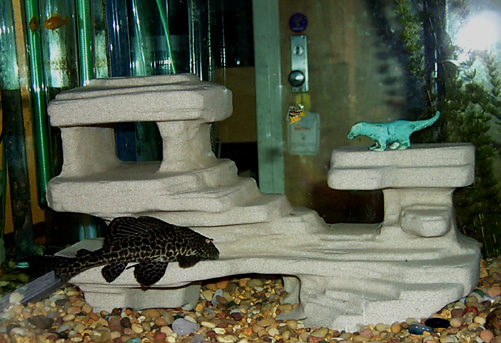
Rather than stressing your tank, you can build caves out of flower pots and plastic structures such as the "Dragon Rock" shown to the right. These structures are much lighter and can be stacked to the top of the tank. You should leave a clear area in the middle to simulate the open areas next to the rocky shores of Lake Malawi. If you want any brackish water plants such as Anubias spp. you can put them there.
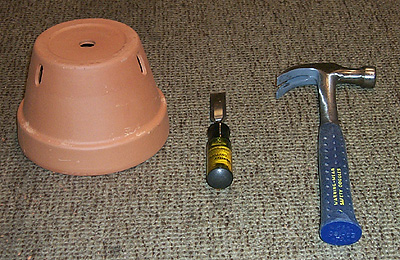
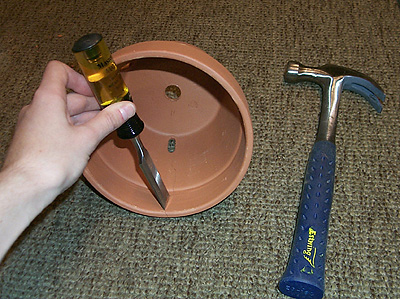
First you make the two vertical cracks. Hold the chisel against the pot with the flat edge of the chisel parallel to the crack you want, directly below a side hole.
Lightly tap on the top of the handle of the chisel until a crack appears. The crack will be stopped by the hole in the pot (this is why you need the side holes).
Stop as soon as you see the crack.
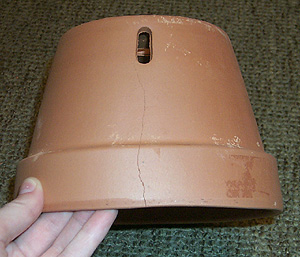
A side crack looks something like this:
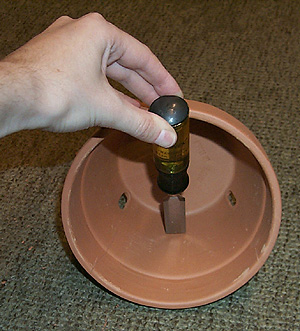
Now that you have the two vertical cracks (they don't need to be perfectly straight and probably won't be), use the chisel to tap a horizontal crack out between the two holes. This will complete the cracks and make a doorway.
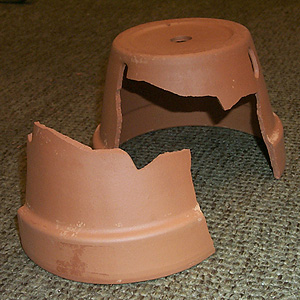
Now you will have something like this. Now sand down the sharp edges with 100 grit sand paper, wash the dust off and you're ready to go!
This process has about a 75% accuracy rating. Due to the fact that some of the pots you buy will have hairline fractures in them from being transported, a certain number of them will split in half when you tap them with the hammer. It also takes a bit of practice with the screwdriver to get the cracks to go in the right direction (you're using the edge of the screwdriver to influence the direction of the crack but it's not perfect). However, when the pot inevitably crumbles, don't throw it out! Chances are that even the smallest pot fragment will make a great baby hiding cave and the larger ones will make decent caves as well.

Here are a whole bunch of completed pots and fragments.
Wondering how I made those big flat plates that go between the levels of pots? Look for the huge ceramic pots for patio trees and buy a water catching base for one of those huge pots. It will look like a really thick plate with upturned edges. Knock the edges off with a hammer (or just turn it upside down if you don't care about the overhang). If you do knock the edges off, make sure to sand them down so the fish don't hurt themselves.
Comments? Questions? Contact l x s @ m a c . c o m.
All pages copyright ©2000-2015 Alexandra Ellwood.
Last modified at Sunday, April 19, 2015